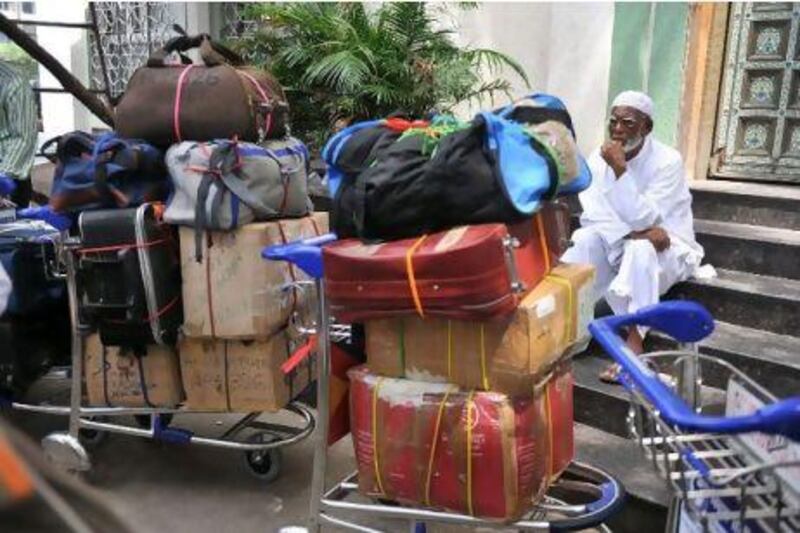Saudi Arabia's travel industry is preparing for an expected surge of up to 2.7 million people to the country's holiest sites for the annual Haj later this year.
Airlines are leasing extra planes to handle the rush while tour operators and hotels are also finalising plans for the Haj season, from November to December.
Nasair, a budget airline based in Jeddah and Riyadh that also has a specialised division catering for religious pilgrim traffic, is preparing to lease two additional aircraft for the season after carrying more than 30,000 pilgrims last year, mostly from India and African nations.
"Haj season on the overall bottom line is great," said Turki al Jawini, the director of sales of Nasair. "It is high yield as well."
The annual pilgrimage includes visits to the country's holiest cities including a five-day tour of important sites called Mashaer.
The number of religious tourists from each country is carefully allocated by the Saudi government's ministry of Haj. This year the ministry is expected to allocate between 1.5 million and 1.7 million visas to foreign pilgrims, in addition to an estimated 1.2 million Saudis who will travel internally for the Haj, Mr al Jawini said. Of these domestic and international pilgrims, about 75 per cent are expected to travel by air, with the rest arriving by land or sea routes, he estimated.
Regional carriers, including the UAE's five airlines, are expected to see businesses boosted by the season. The budget carrier flydubai recently expanded its focus into Saudi Arabia and now flies to five Saudi cities, increasing its exposure to the seasonal flood of travellers. The popularity of the Haj is growing every year as the Saudi government expands facilities for pilgrims, said Abdullah Mokhtar, the assistant general manager of Dar al Manasek Tourism and Umrah services, based in Jeddah. The majority of foreign pilgrims come from Iran, Turkey, Indonesia and Malaysia, he said.
Recent major infrastructure developments in Saudi Arabia include a US$1.7 billion (Dh6.24bn) monorail project linking Mecca, Mina, Arafat and Muzdalifah that was partially opened for last year's pilgrimage. The value of the Haj season lies partly in the length of stay for many pilgrims. While GCC residents usually stay for shorter periods, the pilgrims travelling from further abroad stay as long as six weeks in the country.
"Many arrive early and leave late, as it will be their first and last time probably to be in Mecca, so they opt to stay as long as they can," Mr al Jawini said.
Nasair launched in 2007 and operates 14 aircraft to 21 international destinations and six cities within the kingdom. The airline and fellow budget carrier Sama Airlines was created in a liberalisation programme to introduce competition in the Saudi aviation marketplace and upend the traditional dominance of the loss-making Saudi Arabian Airlines.
However, Sama shut down last year citing financial difficulties, while Nasair remains working towards profitability, Mr al Jawini said. Nasair carried 2.3 million passengers last year, up from 750,000 in 2008.






